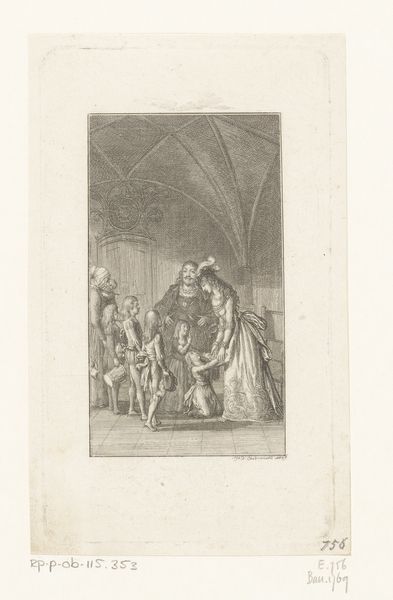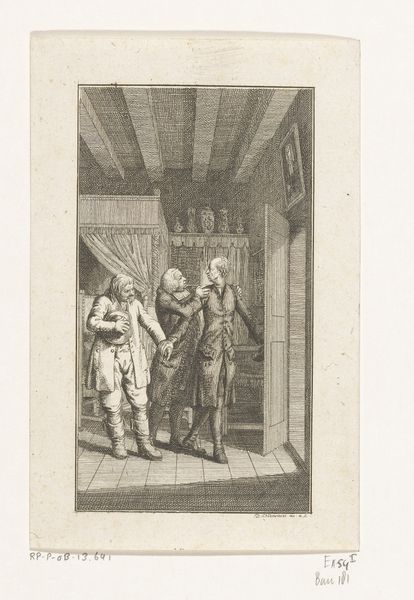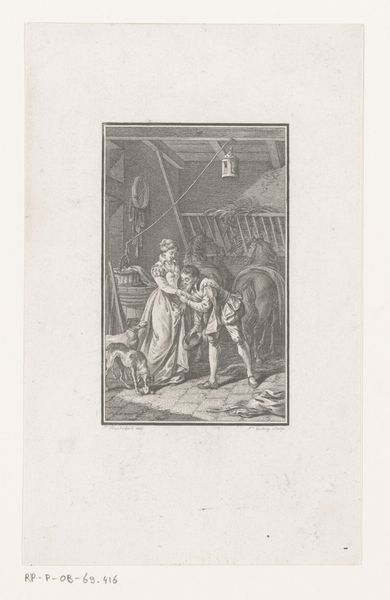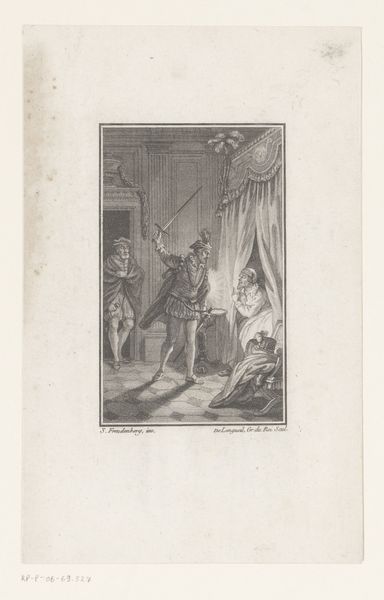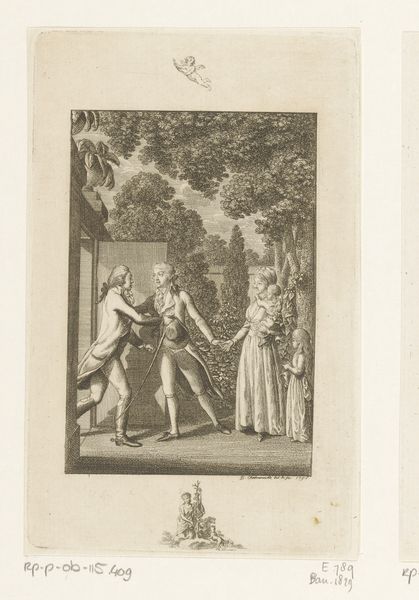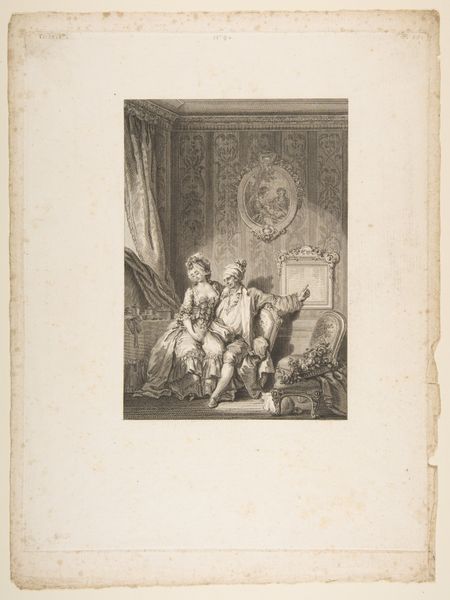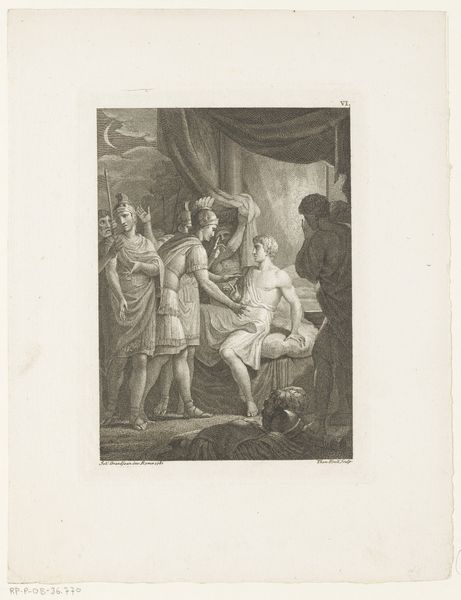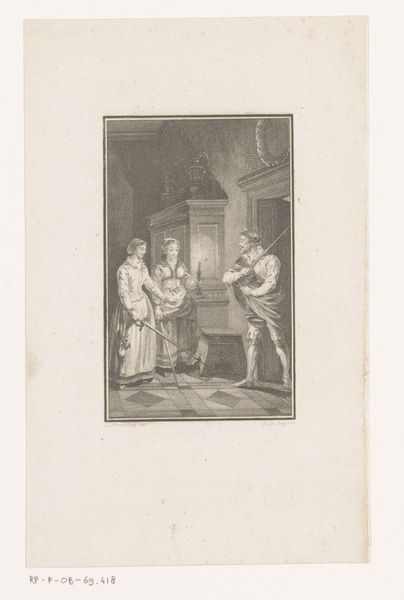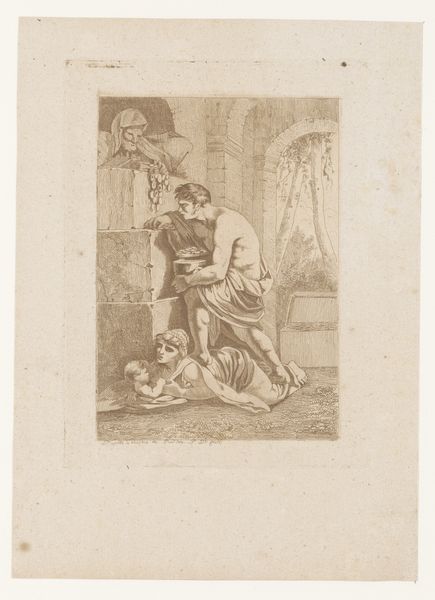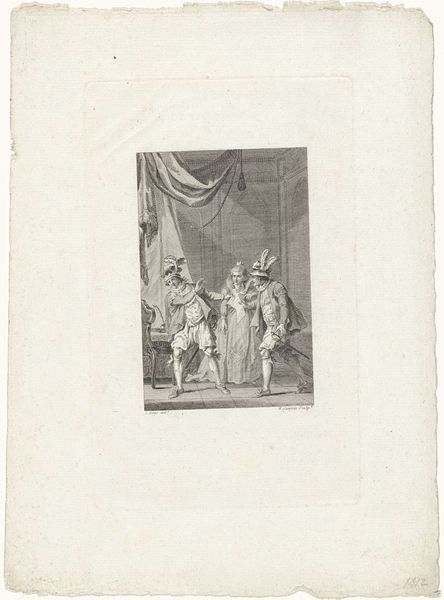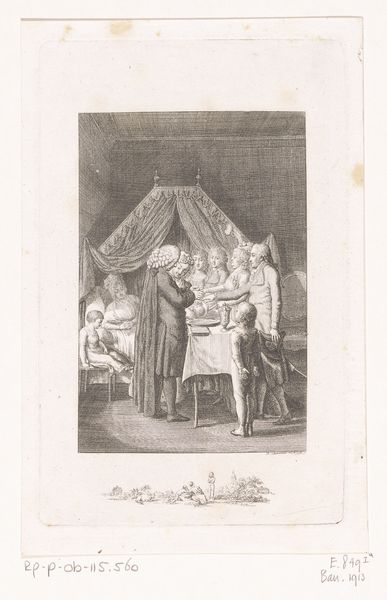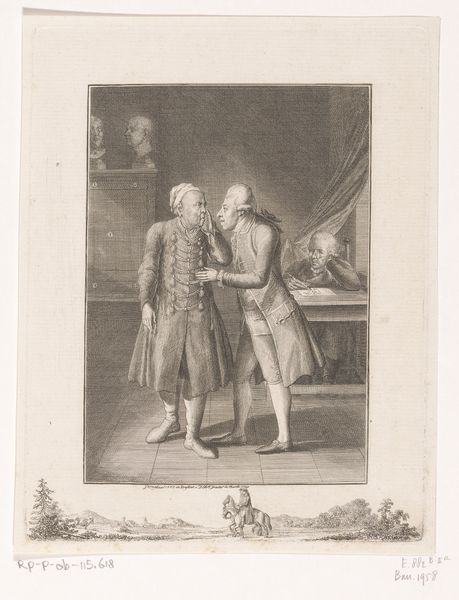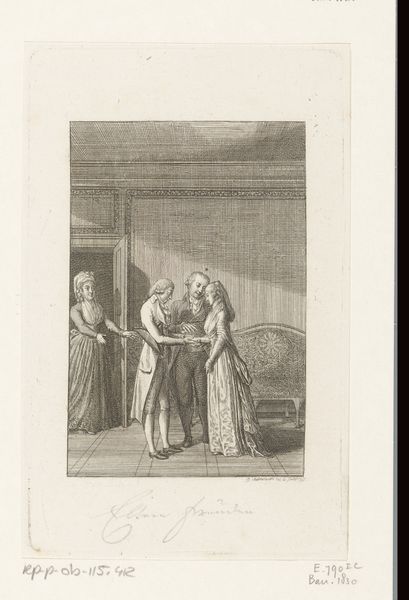
Dimensions: height 197 mm, width 141 mm
Copyright: Rijks Museum: Open Domain
Curator: Let’s turn our attention to this intriguing engraving by Daniel Nikolaus Chodowiecki, created around 1798. It’s currently part of the Rijksmuseum's collection. Editor: My initial impression is one of staged drama. The subjects have an almost theatrical air about them. It feels a little claustrophobic, doesn’t it? All that close contact! Curator: It does. The piece is titled "Chodowiecki sketches Lippert and Zingg", so what we're seeing, in essence, is a depiction of artistic creation, or rather, the setting of a portrait sitting. Considering that this is from the late 18th century, the performance and patronage that were deeply linked to art are at play. Editor: I agree, and I immediately latch onto the racialized aspect of their features. They appear caricatured; that wide, gaping grin feels loaded, almost violent. How did societal norms shape how portraiture of the era functioned to solidify or challenge class structures and hierarchies? Curator: It is important to look into who Lippert and Zingg were within the social milieu. To some degree, it could reflect the patron-artist relationship or certain class and intellectual power dynamics of the period. Editor: Indeed. And the bust in the background—what kind of symbolic weight does it hold? Curator: Perhaps a suggestion of idealised forms of the male body, maybe even an invocation of classical wisdom, lending a veneer of respectability to this genre scene. The individual in the background adds to this; like a little cherub hovering with unknown intent! Editor: Looking closer at their expressions, I wonder about the politics of laughter. Is Chodowiecki subtly critiquing societal structures or behaviors, masking commentary within the guise of everyday life? The level of caricature used has my suspicion that they aren't just being neutrally portrayed. Curator: He might very well be! These detailed prints often offered nuanced critiques precisely by depicting seemingly mundane scenes. The setting itself contributes—a somewhat cramped room implying, perhaps, limited perspectives or stifled potential? Editor: Agreed! This drawing goes further than just aesthetic appreciation for me, and gives space to considering broader themes of power, visibility, and societal critique. It reminds us of how potent images were and still are! Curator: Well said, this print allows us to peer into the 18th century's artistic processes and question some of its deeply ingrained social biases.
Comments
No comments
Be the first to comment and join the conversation on the ultimate creative platform.
